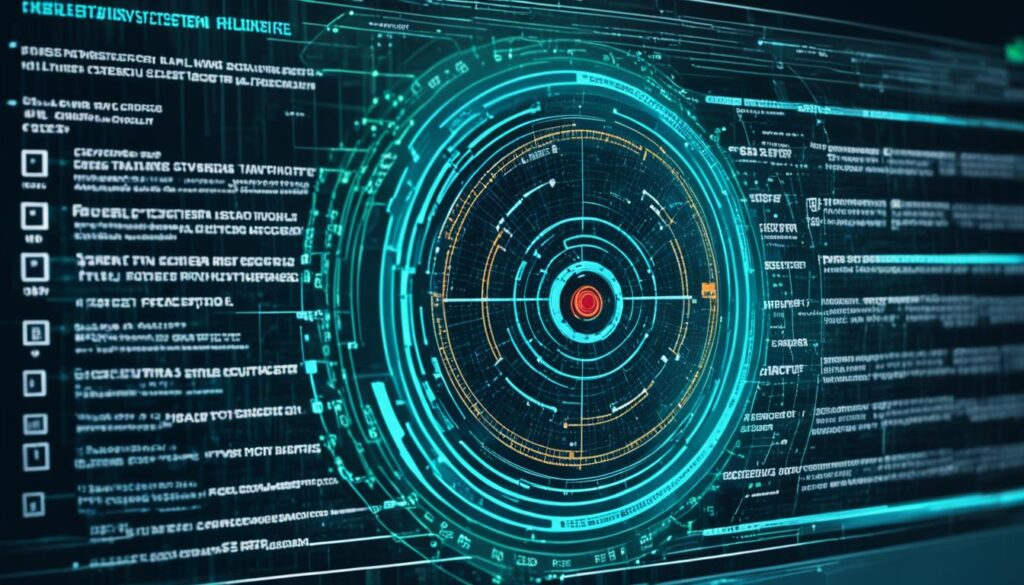The SP800-37 Cybersecurity Framework is a valuable resource for small and medium enterprises (SMEs) looking to strengthen their cybersecurity practices. Developed by the National Institute of Standards and Technology (NIST), this framework provides guidelines and best practices for managing cybersecurity risks and protecting sensitive information. In this article, we will provide an overview of the SP800-37 Framework and its key components, highlighting the importance of cybersecurity for SMEs and how implementing this framework can benefit their businesses. As experts in cybersecurity, we understand the unique challenges faced by SMEs and will provide actionable insights to help SMEs enhance their cybersecurity posture and protect against evolving cyber threats.
Key Insights:
– The SP800-37 Cybersecurity Framework is a comprehensive approach developed by NIST to enhance cybersecurity practices for SMEs.
– SMEs are increasingly becoming targets of cyber attacks due to limited resources and vulnerabilities, making cybersecurity essential for their protection.
– The SP800-37 Framework consists of key components that guide SMEs in identifying, protecting, detecting, responding to, and recovering from cybersecurity threats.
– Risk management is a crucial aspect of the SP800-37 Framework, helping SMEs identify and address potential vulnerabilities and threats.
– Security categorization helps SMEs determine the appropriate security controls needed to protect their systems based on the potential impact of a security breach.
– Selection and implementation of security controls should be based on factors such as cost-effectiveness, feasibility, and impact on system performance.
– The system authorization process evaluates the security posture of SMEs’ information systems, ensuring compliance with established security requirements.
– Continuous monitoring is essential for detecting and responding to potential cyber threats and identifying areas for improvement.
– Implementing the SP800-37 Framework can result in enhanced data security, improved cyber resilience, compliance with cybersecurity standards, and increased customer trust.
– SMEs should prioritize cybersecurity and invest in proactive measures to safeguard their digital assets in today’s threat-laden digital landscape.
The Importance of Cybersecurity for SMEs
Small and medium enterprises (SMEs) are increasingly becoming targets of cyber attacks due to their limited resources and vulnerabilities.
Cybersecurity is essential for SMEs to protect their sensitive data, customer information, and intellectual property. Without proper cybersecurity measures in place, SMEs are at risk of financial losses, reputational damage, and legal implications. It is crucial for SMEs to understand the importance of cybersecurity and to implement proactive strategies to safeguard their digital assets.
| Cybersecurity Risks for SMEs | Cybersecurity Challenges for Small Businesses |
|---|---|
|
|
Implementing robust cybersecurity measures helps SMEs mitigate and manage these risks effectively. By investing in cybersecurity, SMEs can protect their valuable assets, build trust with customers, and ensure the long-term success and sustainability of their businesses.
Overview of the SP800-37 Cybersecurity Framework
The SP800-37 Cybersecurity Framework is a comprehensive approach developed by the National Institute of Standards and Technology (NIST) to enhance cybersecurity practices for small and medium enterprises (SMEs). It provides guidelines and best practices for managing cybersecurity risks and protecting sensitive information. The framework aims to improve the resilience and security of SMEs in the face of evolving cyber threats.
The SP800-37 Framework consists of several key components that lay the foundation for effective cybersecurity practices. These components guide SMEs in identifying, protecting, detecting, responding to, and recovering from cybersecurity threats. Let’s take a closer look at each component and its role within the framework:
Risk Assessment
The first component of the SP800-37 Framework is risk assessment. SMEs conduct thorough assessments to identify potential vulnerabilities and threats. By understanding their risk landscape, SMEs can prioritize and allocate resources effectively to mitigate the most critical risks.
Security Categorization
Security categorization involves classifying information systems based on the potential impact of a security breach. SMEs categorize their systems according to the confidentiality, integrity, and availability of their information assets. This helps determine the appropriate security controls and resource allocation needed to protect the systems effectively.
Security Control Selection and Implementation
After categorizing their systems, SMEs select and implement security controls based on their specific needs and risk tolerance. The framework provides a wide range of security controls for SMEs to choose from, considering factors such as cost-effectiveness, feasibility, and impact on system performance.
Security Control Assessment
Security control assessment involves evaluating the effectiveness of implemented security controls. SMEs regularly monitor, test, and evaluate the controls to ensure they are functioning as intended and providing adequate protection against cybersecurity threats.
System Authorization
The system authorization component focuses on evaluating the security posture of SMEs’ information systems. This process involves conducting security control assessments, reviewing system documentation, and assessing compliance with established security requirements.
Continuous Monitoring
Continuous monitoring is an ongoing process to assess the effectiveness of security controls and system vulnerabilities. Through real-time monitoring and assessment, SMEs can quickly detect and respond to potential cyber threats, identify security gaps, and implement timely remediation actions.
In summary, the SP800-37 Cybersecurity Framework provides SMEs with a structured approach to enhance their cybersecurity practices. By following the guidelines and utilizing the key components of the framework, SMEs can strengthen their cybersecurity posture and effectively protect their sensitive information from evolving cyber threats.
Risk Management in the SP800-37 Framework
In the SP800-37 Framework, risk management plays a crucial role in ensuring the cybersecurity resilience of small and medium enterprises (SMEs). By implementing effective risk management practices, SMEs can identify and prioritize potential vulnerabilities and threats, and develop proactive strategies to mitigate these risks. Let’s explore the key components of risk management in the SP800-37 Framework:
Risk Assessment in Cybersecurity Framework
Before implementing any cybersecurity measures, SMEs need to conduct comprehensive risk assessments. By conducting risk assessments, SMEs can gain a deep understanding of their risk landscape and identify potential security vulnerabilities. This allows them to prioritize risks based on their potential impact and develop appropriate risk mitigation strategies. By utilizing risk assessment tools and techniques provided by the SP800-37 Framework, SMEs can make informed decisions to safeguard their digital assets.
Risk Mitigation Strategies for SMEs
Once risks have been identified, SMEs can develop risk mitigation strategies to reduce the likelihood and impact of potential cybersecurity incidents. Risk mitigation strategies include implementing appropriate security controls, adopting industry best practices, and allocating resources effectively. The SP800-37 Framework provides SMEs with guidance on selecting and implementing security controls that are tailored to their specific risk profile. This ensures that SMEs can make informed decisions to protect their information assets while considering their unique operational constraints and risk tolerance.
By implementing risk mitigation strategies, SMEs can proactively address potential vulnerabilities and threats, minimizing the impact of cyber-attacks and maximizing their cybersecurity resilience.
It is important to note that risk management is an ongoing process in the SP800-37 Framework. SMEs should regularly reassess their risk landscape, review their risk mitigation strategies, and update their cybersecurity measures accordingly. By continually monitoring and adapting to emerging threats, SMEs can effectively manage and mitigate risks, ensuring the long-term security of their digital ecosystem.
Security Categorization in the SP800-37 Framework
Security categorization plays a crucial role in the implementation of the SP800-37 Framework. It involves classifying information systems based on the potential impact of a security breach. For small and medium enterprises (SMEs), it is important to categorize their systems according to the confidentiality, integrity, and availability of their information assets. This categorization process helps SMEs determine the appropriate security controls and allocate resources effectively to protect their systems.
During the security categorization process, SMEs assign security impact levels to their categorized systems. These levels, such as low, moderate, and high, indicate the potential adverse impact of a security incident on the systems. By understanding the security impact levels, SMEs can prioritize their security efforts and focus on protecting the most critical systems.
Implementing the security categorization process requires a thorough understanding of the information assets and their value to the organization. SMEs must consider the sensitivity of their data, the potential damage of unauthorized access or disclosure, and the disruption to business operations in the event of a security breach.
Effective security categorization enables SMEs to implement appropriate security controls and measures tailored to the specific needs of their systems. By aligning security controls with the identified security impact levels, SMEs can optimize their resources and mitigate potential risks effectively.
| Security Impact Level | Description |
|---|---|
| Low | Security incidents have limited adverse impacts on the information assets. |
| Moderate | Security incidents have significant adverse impacts on the information assets, which can lead to moderate disruption and damage. |
| High | Security incidents have severe adverse impacts on the information assets, resulting in significant disruption, financial loss, and reputational damage. |
Security Control Selection and Implementation in the SP800-37 Framework

Once SMEs have categorized their systems, the next step is to select and implement appropriate security controls. The SP800-37 Framework offers a comprehensive range of security controls for SMEs to choose from, based on their specific needs and risk tolerance.
When selecting security controls, SMEs should consider factors such as cost-effectiveness, feasibility, and the potential impact on system performance. It is crucial to strike a balance between robust security measures and the smooth operation of business systems.
Best practices for security control implementation include regular monitoring, testing, and evaluation. This ensures the ongoing effectiveness of the implemented controls in protecting against cybersecurity threats.
Key Considerations for Security Control Selection and Implementation:
- Assess the feasibility and resources required for implementing each security control.
- Consider the impact of each control on system performance and user experience.
- Choose controls that align with the specific needs and risk profile of the SME.
- Regularly monitor and evaluate the effectiveness of implemented controls.
- Conduct periodic testing to identify vulnerabilities and address them promptly.
Incorporating these best practices ensures that SMEs have a robust security framework in place, mitigating potential cybersecurity risks.
| Benefits of Security Control Selection and Implementation in the SP800-37 Framework |
|---|
| Enhanced protection against cybersecurity threats |
| Reduced risk of financial losses and reputational damage |
| Compliance with industry standards and regulations |
| Improved customer trust and confidence |
System Authorization in the SP800-37 Framework
System authorization is a critical step in the SP800-37 Framework that focuses on evaluating the security posture of SMEs’ information systems. It plays a crucial role in ensuring that SMEs’ systems meet the necessary security standards and can be granted accreditation to operate.
The system authorization process involves several key activities:
- Conducting security control assessments: This involves assessing the effectiveness of the security controls implemented within the system. It helps identify any vulnerabilities or gaps that may exist.
- Reviewing system documentation: This step involves reviewing the documentation related to the system, including security policies, procedures, and technical specifications. It helps ensure that the system is documented accurately and that there are no discrepancies.
- Assessing system compliance: In this phase, the system’s compliance with established security requirements is evaluated. Compliance includes adherence to legal, regulatory, and organizational requirements.
Upon completion of the system authorization process, SMEs receive accreditation for their systems, providing assurance that they have undergone a comprehensive security evaluation. Accreditation assures SMEs and their stakeholders that their systems are deemed secure for operations.
| Key Activities | Description |
|---|---|
| Security Control Assessments | Conduct assessments to evaluate the effectiveness of security controls implemented within the system. |
| Reviewing System Documentation | Thoroughly review documentation related to the system, including security policies, procedures, and technical specifications. |
| Assessing System Compliance | Evaluate the system’s compliance with established security requirements, including legal, regulatory, and organizational requirements. |
Continuous Monitoring in the SP800-37 Framework

Continuous monitoring plays a crucial role in the SP800-37 Framework, ensuring the ongoing effectiveness of cybersecurity measures for small and medium enterprises (SMEs). By implementing continuous monitoring practices, SMEs can proactively detect and respond to potential cyber threats, identify security gaps, and take timely remediation actions. Additionally, regular cybersecurity auditing provides a comprehensive assessment of the overall effectiveness of the cybersecurity program, enabling SMEs to identify areas for improvement. Let’s explore the key components and benefits of continuous monitoring within the SP800-37 Framework.
Key Components of Continuous Monitoring
Continuous monitoring in the SP800-37 Framework involves real-time monitoring, assessment, and reporting of security controls and system vulnerabilities. It entails a systematic and ongoing evaluation of the cybersecurity posture to ensure the timely detection and response to evolving threats. The key components of continuous monitoring include:
- Real-time monitoring of security controls and system activities
- Ongoing assessment of security posture and vulnerabilities
- Regular reporting of cybersecurity incidents and performance metrics
This iterative process allows SMEs to maintain an up-to-date understanding of their cybersecurity status, enabling timely mitigation of potential risks.
The NIST SP800-37 Monitoring Process
The NIST SP800-37 Framework outlines a structured approach to continuous monitoring that SMEs can adopt. The monitoring process consists of the following steps:
- Establishing a baseline: SMEs define a baseline for their cybersecurity controls and system performance to establish a benchmark for monitoring.
- Real-time monitoring: Continuous monitoring tools are deployed to monitor security controls, network activities, and system performance in real-time.
- Event detection and correlation: Automated systems analyze collected data to identify potential cybersecurity incidents and correlate events for accurate threat detection.
- Incident response: Upon detecting a cybersecurity incident, SMEs initiate appropriate incident response procedures to minimize the impact and ensure prompt resolution.
- Reporting and analysis: Regular reports and analysis of monitoring data are conducted to identify trends, gaps, and areas for improvement in the cybersecurity program.
By following this monitoring process, SMEs can ensure a proactive and agile cybersecurity posture.
The Role of Cybersecurity Auditing for SMEs
In addition to continuous monitoring, regular cybersecurity auditing is essential for SMEs to validate and assess the effectiveness of their cybersecurity program. Auditing involves independent assessments of security controls, policies, and processes to identify vulnerabilities, gaps, and areas for improvement. By conducting cybersecurity audits, SMEs gain valuable insights into their cybersecurity strengths and weaknesses, allowing them to refine their strategies and allocate resources more efficiently.
It is important for SMEs to engage qualified auditors who possess expertise in cybersecurity to ensure comprehensive audits that comply with industry best practices and regulatory standards.
| Benefits of Continuous Monitoring in the SP800-37 Framework |
|---|
| Enhanced threat detection and response capabilities |
| Timely identification of security gaps and vulnerabilities |
| Real-time monitoring of security controls |
| Improved incident response times |
| Regular measurement of cybersecurity program effectiveness |
| Proactive identification of emerging threats |
Continuous monitoring empowers SMEs to stay ahead of cyber threats, enabling swift and effective responses while maintaining a resilient cybersecurity posture.
Benefits of Implementing the SP800-37 Framework for SMEs
By implementing the SP800-37 Framework, small and medium enterprises (SMEs) can enhance their data security, improve cyber resilience, ensure compliance with cybersecurity standards, and gain protection against potential financial and reputational losses. Let’s explore the key benefits of implementing this comprehensive cybersecurity framework.
Enhanced Data Security
Implementing the SP800-37 Framework enables SMEs to strengthen their data security measures. By following the framework’s guidelines and best practices, SMEs can identify and address vulnerabilities proactively. This approach helps in fortifying defenses against cyber threats and safeguarding sensitive information from unauthorized access or breaches.
Improved Cyber Resilience
Cyber resilience is crucial for SMEs to mitigate the impact of cyber attacks and quickly recover from any security incidents. The SP800-37 Framework provides SMEs with a structured and systematic approach to cybersecurity. By implementing the recommended security controls, SMEs can enhance their ability to detect, respond to, and recover from cyber threats effectively, ensuring minimal disruption to their operations.
Compliance with Cybersecurity Standards
Compliance with cybersecurity standards and regulations is essential for SMEs. Non-compliance can lead to legal consequences, reputational damage, and loss of customer trust. Implementing the SP800-37 Framework helps SMEs align their cybersecurity practices with industry standards and regulatory requirements, ensuring adherence to legal obligations and maintaining the trust of customers and stakeholders.
Protection Against Potential Losses
Effective implementation of the SP800-37 Framework provides SMEs with a robust cybersecurity posture, minimizing the risk of financial and reputational losses resulting from cyber attacks. By identifying and addressing vulnerabilities, SMEs can prevent potential data breaches, avoid costly legal battles, and protect their brand reputation.
Increased Customer Trust
SMEs that prioritize cybersecurity and implement the SP800-37 Framework demonstrate their commitment to protecting customer data and ensuring privacy. This dedication to data security builds trust and confidence among customers, leading to long-term customer loyalty, increased business opportunities, and a competitive advantage in the marketplace.
In conclusion, the SP800-37 Framework offers SMEs a comprehensive and structured approach to cybersecurity, resulting in enhanced data security, improved cyber resilience, compliance with cybersecurity standards, protection against potential financial and reputational losses, and increased customer trust. By embracing this framework, SMEs can proactively safeguard their critical information assets and effectively navigate the evolving cybersecurity landscape.
Conclusion
In conclusion, the SP800-37 Cybersecurity Framework is a valuable tool for small and medium enterprises (SMEs) seeking to strengthen their cybersecurity practices. By following the guidelines and best practices provided in the framework, SMEs can effectively manage cybersecurity risks, protect their sensitive information, and enhance their overall cybersecurity posture.
It is imperative for SMEs to prioritize cybersecurity in today’s interconnected and threat-filled digital landscape. By investing in robust and proactive cybersecurity measures, SMEs can safeguard their digital assets and mitigate the potential financial and reputational losses associated with cyber attacks.
Key takeaways from the SP800-37 Framework include conducting thorough risk assessments, categorizing information systems based on security impacts, selecting and implementing appropriate security controls, obtaining system authorization, and implementing continuous monitoring. These steps, when followed diligently, help SMEs in identifying and addressing vulnerabilities, mitigating risks, and maintaining the confidentiality, integrity, and availability of critical information assets.
By adopting the SP800-37 Cybersecurity Framework, SMEs can enhance their data security, improve their cyber resilience, achieve compliance with cybersecurity standards and regulations, and build trust with their customers. It provides a structured approach to cybersecurity, enabling SMEs to develop a comprehensive cybersecurity program that aligns with their specific needs and risk tolerances.







